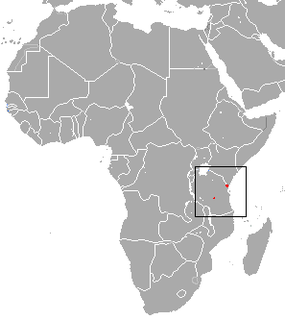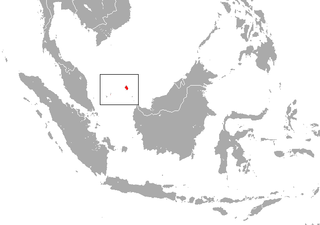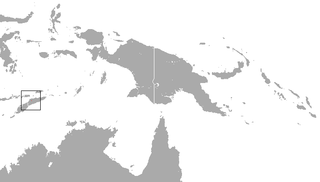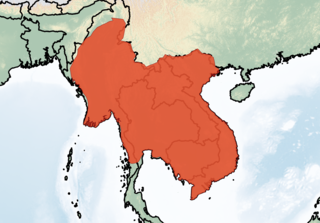
The intermediate horseshoe bat is a bat species of the family Rhinolophidae that is very widespread throughout much of the Indian subcontinent, southern and central China and Southeast Asia. It is listed by IUCN as Least Concern as it is considered common where it occurs, without any known major threats.

The halcyon horseshoe bat is a species of bat in the family Rhinolophidae. It is found in Cameroon, Republic of the Congo, Democratic Republic of the Congo, Ivory Coast, Equatorial Guinea, Ghana, Guinea, Kenya, Liberia, Nigeria, Senegal, South Sudan, Togo, Uganda, possibly Gabon, and possibly Sierra Leone. Its natural habitats are subtropical and tropical dry and moist lowland forest, moist savanna, caves, and other subterranean habitats.

The lesser woolly horseshoe bat, also called Beddome's horseshoe bat, is a species of bat in the family Rhinolophidae. It is found in India and Sri Lanka. Its natural habitats are subtropical or tropical moist lowland forests, caves, and urban areas.

The Andaman horseshoe bat is a species of bat in the family Rhinolophidae. It is endemic to the Andaman Islands. During the day, it roosts in caves, but may also choose tree hollows.

The convex horseshoe bat is a species of bat in the family Rhinolophidae. It is found in Malaysia and Laos.

Blyth's horseshoe bat is a species of bat in the family Rhinolophidae. It is found across southern Asia from Afghanistan to Vietnam. The species can be identified from its pointed, bifid sella.

Maclaud's horseshoe bat is a species of bat in the family Rhinolophidae. It is endemic to Guinea. Its natural habitats are moist savanna, caves and other subterranean habitats. It is one of five African microbat species to be listed as endangered by the IUCN. In 2013, Bat Conservation International listed this species as one of the 35 species of its worldwide priority list of conservation. It is threatened by habitat loss.

The big-eared horseshoe bat is a bat species within the Rhinolophidae native to Asia.

The Maendeleo horseshoe bat is a recently discovered species of bats in the family Rhinolophidae. It inhabits caves of the Coastal Lowland forests of Tanzania. Its closest relative is the Adam's horseshoe bat. It was described in 2000.

The neriad horseshoe bat is a species of bat in the family Rhinolophidae.

The Thai horseshoe bat, sometimes called the Thai leaf-nosed bat, is a species of bat from the family Rhinolophidae. It is frequently listed as a subspecies of the Big-eared horseshoe bat, but this may be a result of the two species being taken in sympatry in Laos. It is native to China, Laos, Thailand, and Vietnam.

Shortridge's horseshoe bat is a species of Horseshoe bat native to Northeast India, northern Myanmar, and southern China. It was first described in 1918 by Knud Andersen, and was considered a subspecies of Blyth's horseshoe bat until 2003 when the two species were collected in sympatry.

The Timorese horseshoe bat is a species of bat native to Timor-Leste.
The Bornean woolly horseshoe bat or Proconsul's horseshoe bat is an endangered species of horseshoe bat found in Malaysia. Though it was discovered in 1959, it was not recognized as a distinct species until 2013.

Rhinolophus microglobosus is a species of horseshoe bat found in Southeast Asia.
The Yaeyama little horseshoe bat is a species of bat in the family Rhinolophidae that is endemic to the Yaeyama Islands of Japan.















